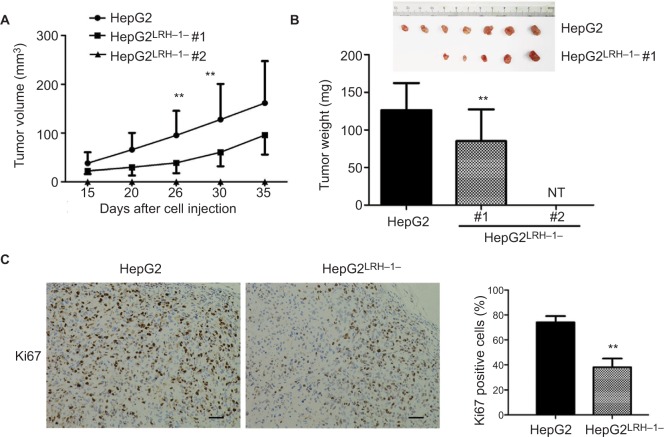Figure 3.
Suppression of LRH-1 in HepG2 attenuates its growth in vivo.
Notes: (A and B) Growth curve shows the growth patterns of tumors formed by HepG2LRH-1/− cell clones and parental HepG2 cells, HepG2 cells formed xenograft tumors with larger sizes and at faster rates as compared to HepG2LRH-1/− #1 cells, while HepG2LRH-1/− #2 lost the in vivo tumorigenic capacity in all nude mice (NT, no tumor). (C) Ki67 immunohistochemistry. Our results suggested that significantly lower and less Ki67 immunoreactivity was seen in xenograft tumors formed from HepG2LRH-1/− than parental HepG2 cells. Scale bar =100 μm.** P<0.01 vs parental HepG2 cells.

